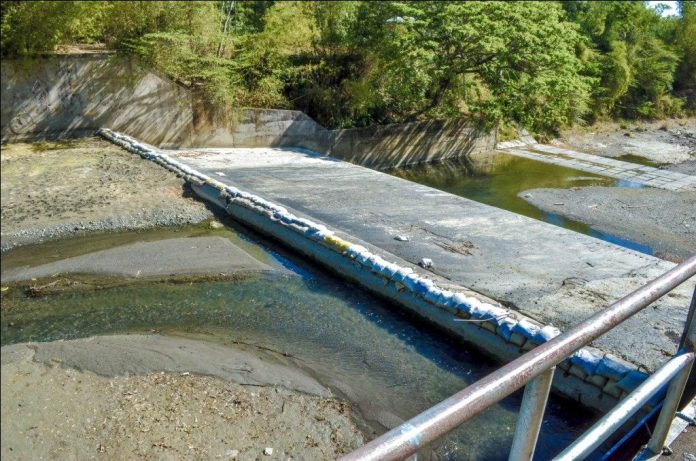
ILOILO City – Water at the dam in Maasin, Iloilo has dropped to critical levels, according to Engineer Rolixto Jodieres Jr., Metro Iloilo Bulk Water Supply Corp.’s (MIB) chief operating officer.
MIB is the joint venture company between Metro Pacific Water and Metro Iloilo Water District (MIWD) whose primary source of water is the Maasin dam.
As of 12 midnight of March 9, water at the dam was 93.76 meters above sea level, already below the critical 93.80-meter mark, said Jodieres.
“This is the effect of the El Niño phenomenon. It has not been raining at the Maasin watershed,” explained Jodieres.
During normal conditions, Maasin dam has an average of 33,500 cubic meters of water per day.
Now, said Jodieres, the volume of water in the dam has dropped to a daily average of 19,000 cubic meters.
“All of the water that passes through the dam goes directly to an intake structure wherein we extract our water,” said Jodieres.
The water is then channeled to MIWD’s treatment plant in the municipality of Santa Barbara, Iloilo before this is distributed to consumers in Iloilo City and the Iloilo provincial towns of Oton, Pavia, Santa Barbara, San Miguel, Leganes, Maasin, and Cabatuan.
To augment water production, Jodieres said auxiliary water sources are being tapped such as deep wells and the newly constructed infiltration gallery all in Cabatuan.
These facilities currently produce an additional 7,500 cubic meters of water each day.
The production wells and the infiltration facilities of MIB are apart from MIWD’s 11 production wells.
According to the state-run Philippine Atmospheric, Geophysical and Astronomical Services Administration (Pagasa), a mild El Niño may start hitting the country in the first quarter of this year.
El Niño is a weather pattern associated with reduced rainfall. According to Pagasa, climate monitoring and analyses indicate that the unusually warm sea surface which started since November 2018 is expected to become a full-blown El Niño.
Dry spell and drought, both “precursors” of El Niño, were observed in several provinces in Luzon and Mindanao from September last year to mid-January 2019, Pagasa climate monitoring chief Analiza Solis earlier said.
The weather bureau defines dry spell as three consecutive months of 21-60 percent rainfall reduction, while drought is either a dry spell that extends to five months, or at least 60 percent rainfall reduction for three consecutive months./PN





